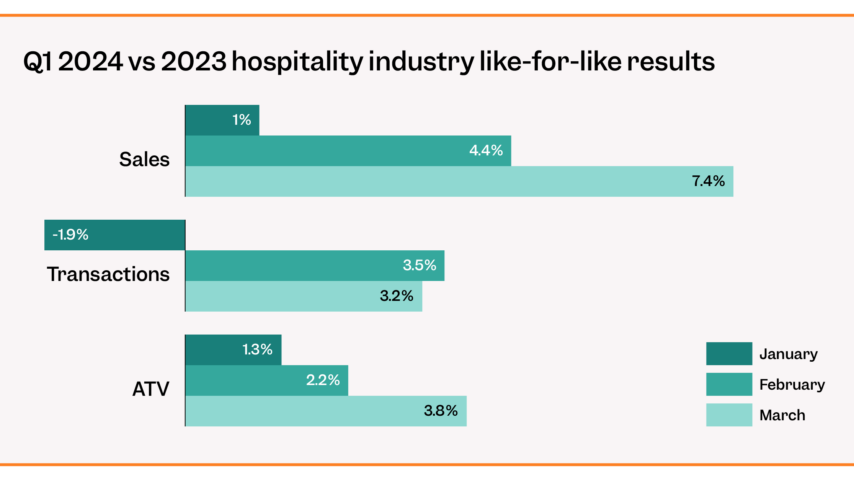In this article
- 1. Ensure an accurate sales forecast to staff against
- 2. Identify âleakageâ in your labour plan
- 3. Ensure you have the right resources for the right type of activity
- 4. Look for flat staffing patterns e.g. the same schedule every week despite varying demand
- 5. Go more granular: consider staffing at 15 or 30-minute intervals as opposed to a typical hourly rhythm
- 6. Identify your best and worst performers and factor that into your labour plan
- 7. Understand the effectiveness of training and onboarding to ensure staff are operating at maximum efficiency within the minimum time/cost
It’s always important to have a handle on your labour cost but in today’s climate more so than ever. Tenzo’s analytics platform and Bizimply’s operations management platform have partnered up to provide a set of steps to help get on top of your labour costs.
1. Ensure an accurate sales forecast to staff against
First and foremost, it’s important to understand how many staff you need on any given day. A key component of that is a sales forecast. The more accurate you can get this, the more closely you’ll be able to align your labour schedule.
A common way to do this is to look at previous patterns e.g. the last four weeks or the same day from the previous year, but it helps to take things a step further by layering in other events and patterns. For example, thinking about different weather conditions or certain days or holidays (like Mother’s Day or Valentine’s Day) can impact your business.
When you understand the top line sales expectation, you can decide how many people you need to serve that demand. We’ll talk more about that in some of the points below.
2. Identify “leakage” in your labour plan
You’ll find there are times you have staff working and you just don’t need them. Here are a couple of examples:
1. Overstaffing during shift changes: rather than change everyone all at once, you can roll the shift change – this means you don’t need to have large numbers of people overlap. You can also have some people end when you expect demand to decrease.
2. Quiet periods in the middle of the day: often there is a lull between lunch and dinner. You should consider how you can reduce your staffing level here, either by using shorter shifts. Alternatively, you can try to smooth demand with mid-afternoon promotions, or by taking advantage of the lull to catch up on prep and cleaning.
Example: Cost of labour as a percentage of sales
This fictional restaurant chain has a high cost of labour as a percentage of sales between 2pm and 3pm (e.g. staffing levels may have remained the same since lunchtime while sales have declined). Therefore, there is significant room to reshuffle or lower staff numbers at this time.
3. Ensure you have the right resources for the right type of activity
It’s important to make sure that all activities of your operation are covered at the appropriate times. For example, baristas for coffee, chefs for food, as well as staff for prepping food as well as serving food. The correct number of staff as a whole is important, but the correct type of staff even more so. Consider the following:
– Forecasting, not just total sales, but also subcategories of revenue e.g. drinks, coffees, retail, food.
– Then you can map individuals to categories of revenue (e.g., one bartender for each £50 of hourly drinks sales).
– You also want to ensure you have the right level of seniority (e.g., only one manager) — it can help to put controls on the number of hours and role types to monitor this.
4. Look for flat staffing patterns e.g. the same schedule every week despite varying demand
As we look at many different types of business, we see this mistake consistently. Not every Saturday is equal, so you should consider varying your labour plans to adapt to the changing situations. For example, if you know snow is forecast, perhaps consider how this might impact demand and adjust down the number of people you need.
If you are worried about commitments to your employees, you could consider a mix of more temporary staff to allow greater flexibility in how, and when, you set the schedule.
5. Go more granular: consider staffing at 15 or 30-minute intervals as opposed to a typical hourly rhythm
Customers don’t think in terms of hours, and neither should you. Starting shifts at 30, or even 15-minute, intervals can help you shave off an hour or two here and there. Saving an hour of labour a day can add up to over £3,500 a year, so every hour matters.
Example: Average actual cost & sales
This fictional restaurant chain has excess labour cost (on average over the last quarter to date) between 2pm and 4pm, on all days of the week at its Kensington location. The next step would be to dive in further to determine which days of the week this occurs more frequently.
6. Identify your best and worst performers and factor that into your labour plan
People tend to assume that a labour plan is only about the number of people you have on at a given time, but it’s also critical to think about the actual people. You may only need one star in comparison to two novices. Consider what’s best for your business and your employees:
1. You may want to put your best people on at your busiest times.
2. “Newbies” probably want to be paired with some old hands, and also likely at off-peak teams to start.
3. Interpersonal dynamics may also be an important factor. You want to staff teams that get on and work well together.
Example: Pairing employees
At this fictional restaurant, John Johnson was a high performer last month and should be paired with Mary Jones if possible, so John can mentor Mary to be a top performer.
7. Understand the effectiveness of training and onboarding to ensure staff are operating at maximum efficiency within the minimum time/cost
Learning and development is often an area overlooked in the data and analytics department, but it is incredibly informative. You can track metrics like the following to help you understand how training is progressing:
– Onboarding time.
– Employee errors, or void rates, to understand how effective training has been.
– Customer satisfaction is also often impacted by this, so it’s worth looking at social media reviews to understand how employees are driving this.
Of course, to do all this you need to have the right software in place. Get started with our integration to Tenzo and start transforming your business today.





